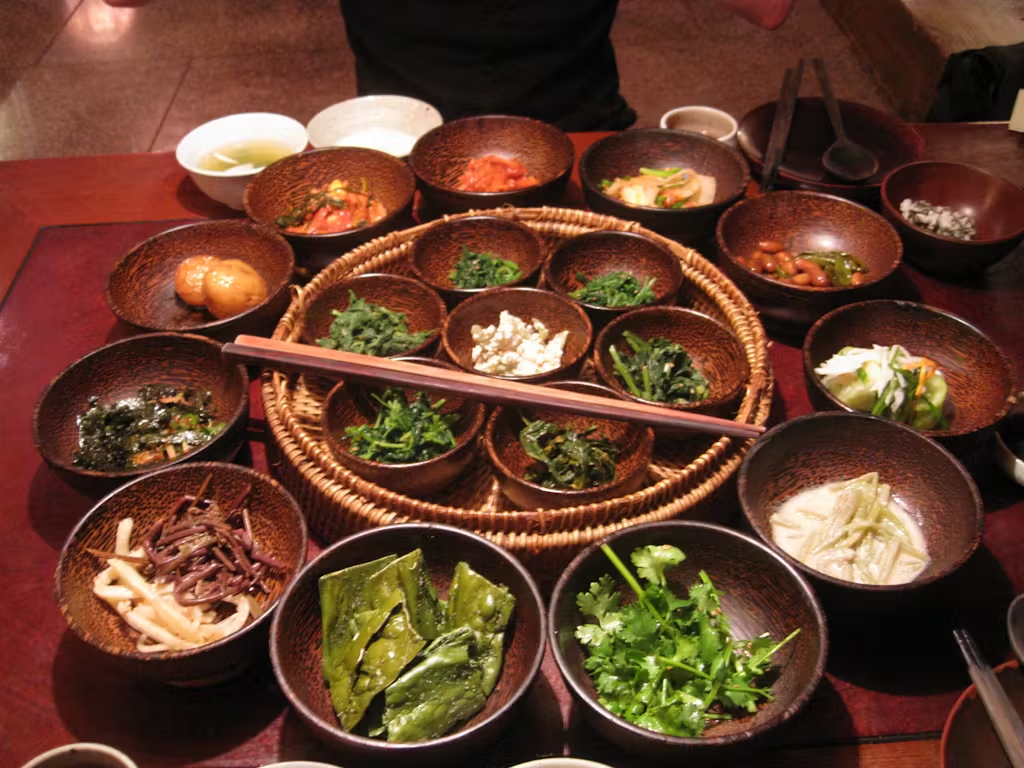Korean cuisine is a vibrant and diverse reflection of the country’s long history, geographic diversity, and cultural practices. Whether you’re a foodie, a traveler, or someone eager to learn more about Korean culture, understanding its culinary traditions is an essential part of the journey.
A Taste of Korea: The Basics of Korean Cuisine
Korean food is known for its bold, savory flavors, balanced by a variety of textures and colors. The fundamental ingredients of Korean cooking include rice (bap), vegetables, meats, and fermented foods. A staple in nearly every meal is kimchi, a pungent and spicy fermented vegetable dish—often made with napa cabbage or radishes—packed with probiotics and umami flavor.
A typical Korean meal is structured around a central dish of rice accompanied by various side dishes called banchan. These side dishes are usually shared among the table and can include a range of options, from stir-fried vegetables to small portions of fermented foods and pancakes. The balance between flavors—spicy, sour, salty, and sweet—reflects the Korean culinary philosophy of achieving harmony.
Popular Korean Dishes to Try:
Bibimbap – A mixed rice dish topped with vegetables, meat (usually beef), a fried egg, and a dollop of spicy gochujang (fermented chili paste). The ingredients are stirred together before eating, offering a delightful combination of textures.Kimchi Jjigae – A rich, savory stew made with kimchi, tofu, and sometimes pork or tuna. It’s a comfort food often eaten with rice and enjoyed during colder months.
Bulgogi – Marinated beef (or sometimes pork) grilled or stir-fried to perfection. It’s sweet, savory, and tender, usually served with rice and vegetables.
Tteokbokki – Spicy rice cakes in a sweet and savory sauce made with gochujang. A popular street food, it’s chewy, tangy, and addictive.
Samgyeopsal – Grilled pork belly, often enjoyed in a social setting where diners grill their meat at the table and wrap it in lettuce leaves with garlic, dipping sauces, and other condiments.
Fermentation: The Heart of Korean Cooking
Fermentation plays a crucial role in Korean food. Kimchi, doenjang (fermented soybean paste), and gochujang (fermented chili paste) are just a few examples of the many fermented ingredients that lend Korean dishes their depth of flavor and nutritional benefits. Fermented foods are also believed to aid in digestion and promote gut health, making them a key part of the Korean diet.Korean Culture: The Social and Spiritual Side of Eating
Food in Korea isn’t just about taste—it’s deeply intertwined with the nation’s culture, traditions, and social values. Dining is often a communal activity, symbolizing unity and togetherness. In Korean culture, sharing a meal is an expression of care and respect. Meals are often enjoyed with family, friends, or colleagues, and the act of serving others is a sign of hospitality.
One of the most important aspects of dining etiquette in Korea is the concept of respecting elders. It is customary to wait for the eldest person at the table to start eating before others begin. Additionally, younger people usually pour drinks for older individuals as a sign of respect, and it is common to hold your cup with both hands when receiving a drink from someone senior.
Moreover, Korean dining customs are shaped by the practice of balance and harmony, reflecting broader philosophical ideas from Confucianism, which has historically influenced Korean society. This is evident not just in the variety of dishes served, but in how they complement each other to provide a balanced and nourishing meal.
A Glimpse into Korean Traditions Beyond Food
Korean culture is rich with traditions that extend far beyond the dining table. Key aspects of Korean life include:
Hanbok – The traditional Korean clothing, often worn during festivals, weddings, and national holidays. The colorful and elegant designs represent Korean history and artistry.Seollal (Lunar New Year) – A major holiday in Korea where families gather to perform ancestral rites, eat traditional dishes like tteokguk (rice cake soup), and enjoy games and activities.
Chuseok (Korean Harvest Festival) – Another important holiday, where families come together to celebrate the harvest, pay respects to ancestors, and share meals, including songpyeon (rice cakes filled with sweet fillings).
K-Pop and Korean Drama – In recent years, Korean pop culture—especially K-pop music and Korean dramas (K-Dramas)—has become a global phenomenon. These forms of entertainment give a glimpse into modern Korean life and have helped spread interest in the country’s traditions, including its cuisine.


